After spending vast amounts of time with coaches, decision-makers and fans of clubs across the English Football League, Gab Sutton uses his extensive research and knowledge of the three divisions to convey his blueprint for success.
The three English Football Leagues below the Premier League are some of the most exhilarating and unpredictable competitions in European club football. But with competition so fierce, there are many elements that can be enforced and controlled to make success more likely.
What does your club need to put in place to thrive and survive in the English Football League?
1. Maximise Your Surroundings
Focus on how the club’s location can be beneficial and tailor the model towards maximizing that advantage.
For example, if the surrounding region is a footballing hotbed like Lancashire, the best approach is to utilize the loan market, or pick up dropouts from elite academies and help them rebuild. Keep a close eye on the U18s and U21s at Manchester United, Manchester City and Liverpool.
Bolton Wanderers have utilized their proximity to the three clubs to get loanees James Trafford (Man City), Connor Bradley (Liverpool) and Owen Beck (Liverpool) in this season. Trafford (1,710) and Bradley (1,486) have played the second-most and fourth-most league minutes for Bolton this season, respectively, and have helped them reach fifth in the League One table at the time of writing.

If it’s a sparse region like Cumbria, there’s far less competition for the top local players and an appeal to young families, who want to buy a sizeable yet affordable house. Those people are more likely to value security, which lends itself to long-term contracts for players in their mid-late 20s.
Understand the specific nuances of your area and what it can offer, then tailor a sustainable model based on that.
2. Respect Identity
It’s so important in football to evolve with the times, but some things transcend generations. History. Rivalries. Colours. Crests. Songs. Mottos. Gestures. Stylistic expectations.
Understanding the club’s identity can be helpful because that knowledge can then be used to inform decision-making.
For example, Millwall and Sheffield United fans respect direct, straight-talking people, yet the clubs appointed Ian Holloway and Nigel Adkins respectively: both have achieved great things elsewhere, but neither quite fitted the cultural ethos.
Those clubs subsequently appointed Neil Harris and Chris Wilder and, because the bosses fitted the identity of the club as well as being excellent managers, the Lions and the Blades embarked on their most successful periods in modern history.
This doesn’t mean every decision has to be voted for by fans, rather that better choices can be made with some understanding of what they want.
3. Invest in the Operation
It’s impractical to expect one person to take care of training, team selection, in-game management, man management, recruitment, and other day-to-day operational matters.
The key, therefore, is making sure the manager or head coach feels supported in everything they do: that if they ask for something, they’re at least listened to.
With the right structure, the quality of coaching, tactics and in-game management can massively improve.
The more traditional clubs see appointing a sporting director or head of recruitment as an unnecessary waste of money on tasks the manager can do, but this is short-sighted.
Investing more in the overall operation can mean less needs to be invested in the playing squad, because the recruitment process becomes more rigorous and likely more accurate, therefore more players get sold for more money and fewer mistakes are made.
With the right due diligence, £50k per year could get a League Two club a top sporting director, which would equate to the cost of one first team player.
If clubs are happy to pay that money for an individual player, it makes sense to pay it for somebody who can oversee the whole operation and keep day-to-day matters running smoothly.
4. Pick a Style
Considering, perhaps, the club identity referenced above, the key is to pick a playing style and a predominant formation that complements it.
Whether that’s a frenetic high-press, swift counter-attacking or patient, possession play, stick to it, and use to inform all future footballing decision-making, including the choice of head coach.
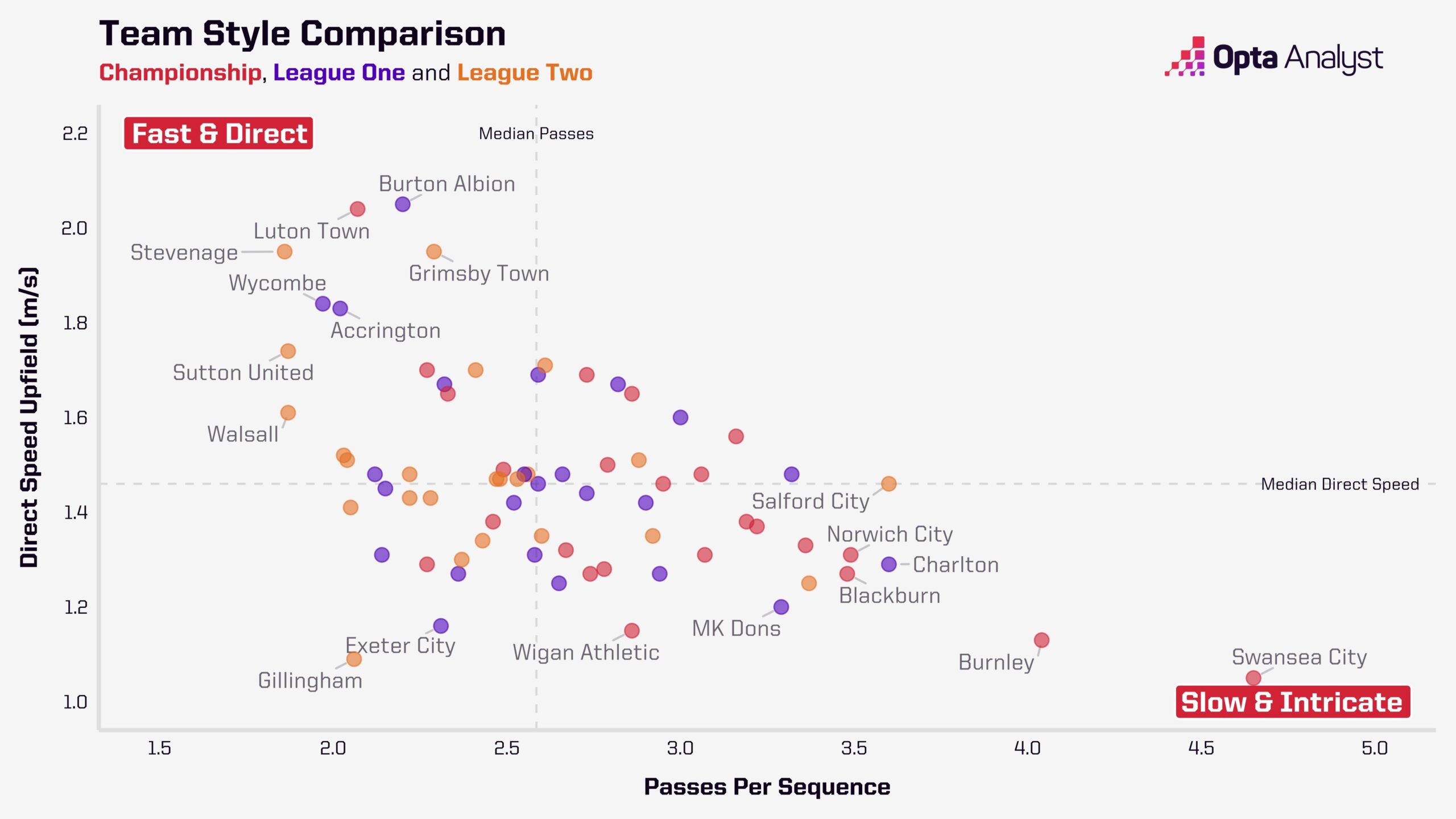
Many clubs have wasted money by not only chopping and changing manager but appointing each one as an antidote to the weaknesses of the last.
Consequently, they have left themselves with imbalanced squads and thus managers have been forced to compromise their tactical principles.
5. Recruit Specifically
List the qualities required in order of importance for each position.
Just as importantly, be conscious of the qualities the club is willing to compromise on based on budget and divisional status.
Then, build a squad from which to establish a coherent system. It should be clear how a chance could be created, starting from the feet of the goalkeeper or centre-backs.
If the strategy is playing out from the back, for instance, there must be assured, ball-playing defenders. If it’s to go long, there must be a powerful target man.
With neither, teams risk playing to the weaknesses of personnel rather than strengths, and alternative solutions like starting by going to the flanks or dropping a midfielder back has significant drawbacks.
When Burnley were relegated from the Premier League last season, they went on to appoint Vincent Kompany as eventual successor to Sean Dyche. We all know Burnley’s playing ethos under Dyche’s reign and how that differed wildly from Kompany’s style. That mean that recruitment was key for Burnley this summer, to replace players that wouldn’t be suited to the new style (not to mention on Premier League wages) with those that were more comfortable with the ball at their feet and playing a possession-heavy but expansive playing style.
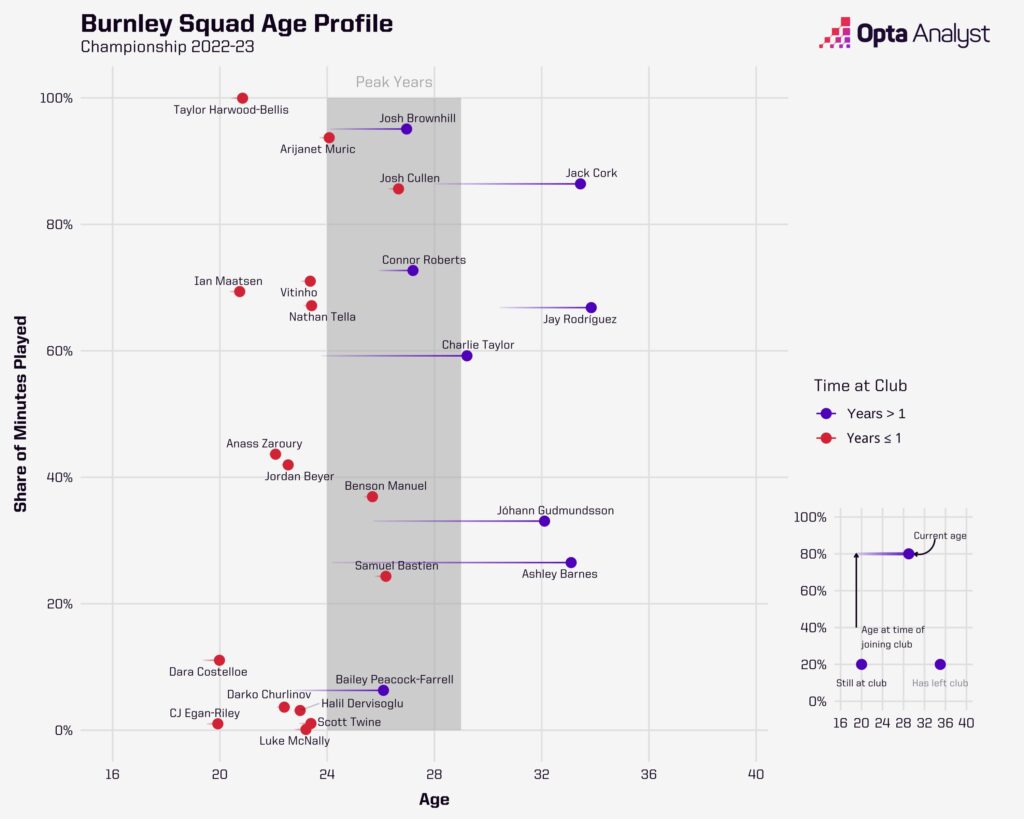
Since October 2012 with Dyche in charge, Burnley averaged 228 successful passes per game and 42.8% possession. This season in the Championship, Kompany’s Burnley average a league-high 64.2% possession and only average fewer successful passes per game (462) than Swansea (497) in the second tier. With 16 players to have appeared in the Championship this season in their first year at the club following a huge turnaround of playing staff, that transition has happened much quicker than many expected.
Joined-up thinking in recruitment is crucial to establishing a clear style of play.
6. Empower People to Do Their Jobs
Regular conversations in day-to-day operations are great for establishing trust, strengthening relationships, and keeping people in the loop, but that doesn’t mean everyone has to chip in on every decision.
Managers have been in job interviews in which they asked who they would have to go through to sign a player and are met with an uncertain response.
Clubs that have based past successes on the spirit of the collective can run the risk of being too committee-led, for the level their achievements have attained.
A communal strategy sounds great in theory, but in practice it can slow down the operation, because everyone must either agree or compromise, sometimes at the expense of the most informed.
The most successful clubs give people the tools, trust and space to do their jobs effectively.
Whether it’s in recruitment, analytics or commercial departments, people are likely to be motivated to produce better work if they feel it will have a bigger impact on the ultimate outcome.
7. Open Communication Lines
Having a positive, healthy relationship with the media is extremely important.
Journalists are paid to act as a go-between club and supporters, so they should feel free to ask any employee any club-related question they want, and have it answered courteously, and as honestly as possible.
Similarly, an interactive social media presence is preferable for answering specialist queries and keeping people informed.
The disconnect between clubs and fans at the elite level means lower league clubs have a fantastic opportunity to offer an alternative that makes people feel cared for, and that their voice is being heard.
This comes back to the purpose as a club, which beyond results on the pitch, and towards serving the represented city, town or village as well as possible.
This means building connections with people, linking up with local businesses, helping out local schools, giving away shirts to children, and engaging in community causes.
People don’t buy what we do, they buy why we do it – the clubs that recognize that will be rewarded.
8. Culture-setting is Crucial
Two examples of successful culture-setting come from clubs who were promoted against the odds in League Two in 2020-21, before staying up under the same manager the following season.
Mark Bonner’s success at Cambridge has come through fostering a calm, emotionally stable atmosphere that players enjoy working in.
For Derek Adams, it started with removing the “little old Morecambe” tag and creating an environment of courage and drive. This attitude helped Morecambe reach the third tier of English football for the first time ever, following their League Two play-off final victory over Newport County in May 2021.
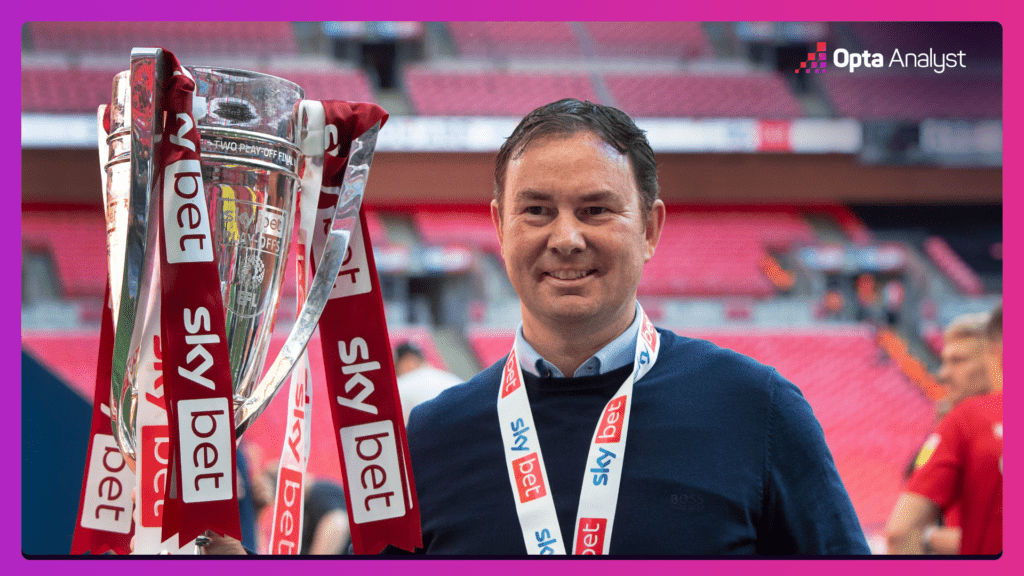
In both cases, they were cultivated through authentic, consistent behaviour from the leader, matching up words with actions.
While this process must start from the top, it’s also so important that whoever else is brought into the club is a good fit for the environment the leader is trying to build.
In Cambridge’s case, they were lucky enough to have a star in Wes Hoolahan who not only had sublime technical ability from his higher league experience, yet also no ego despite this.
If the most gifted player buys into the cause, it becomes difficult for anybody else to not do so, thus over time the culture can become self-sustaining, as much as instructed by the manager.
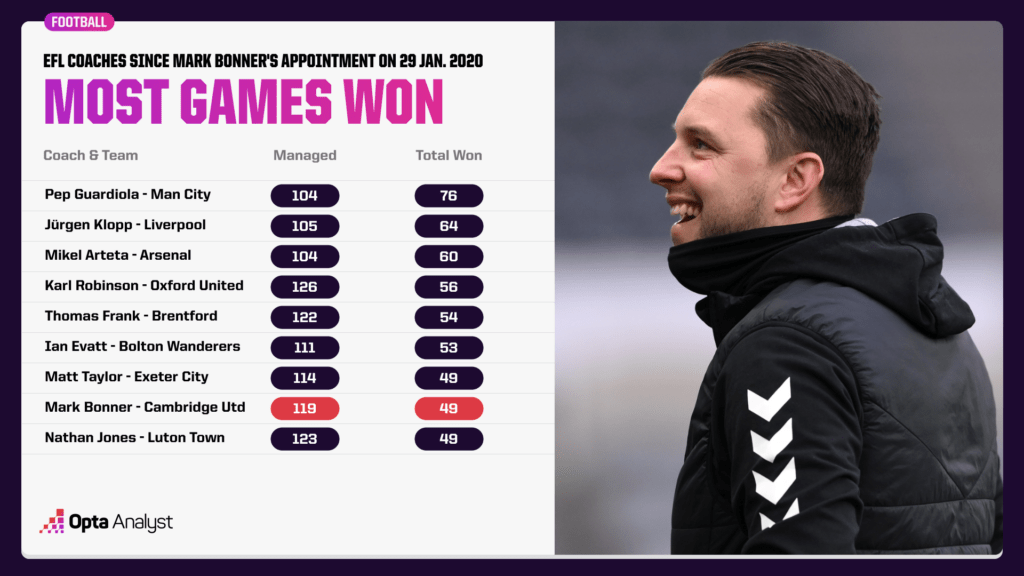
Having the right culture is an incredibly powerful when seeking to succeed against the odds.
It’s possible with authentic leadership, an alignment of words and actions, rigorous recruitment and one or two individuals who could be forgiven for having an ego, but instead set the tone for the rest.
9. Leave Pathways Open
Being innovative in the long-term can mean compromising short-term efficiency.
For example, loading up the first-team squad with two proven senior players for each position might get results for a season, but it means working on a high wage bill with less room for high-potential players to sprout.
Unless backed by a rich benefactor, this approach is unsustainable over multiple seasons, because it doesn’t tend to earn big transfer fees.
Fleetwood and Wycombe have some of the best U23 players in League One thanks to their Development Squad and B-Team respectively, while Exeter and Wimbledon have fostered excellent relationships with a strong network of local non-league clubs who develop their top young players, then left spaces open for them in the squad.
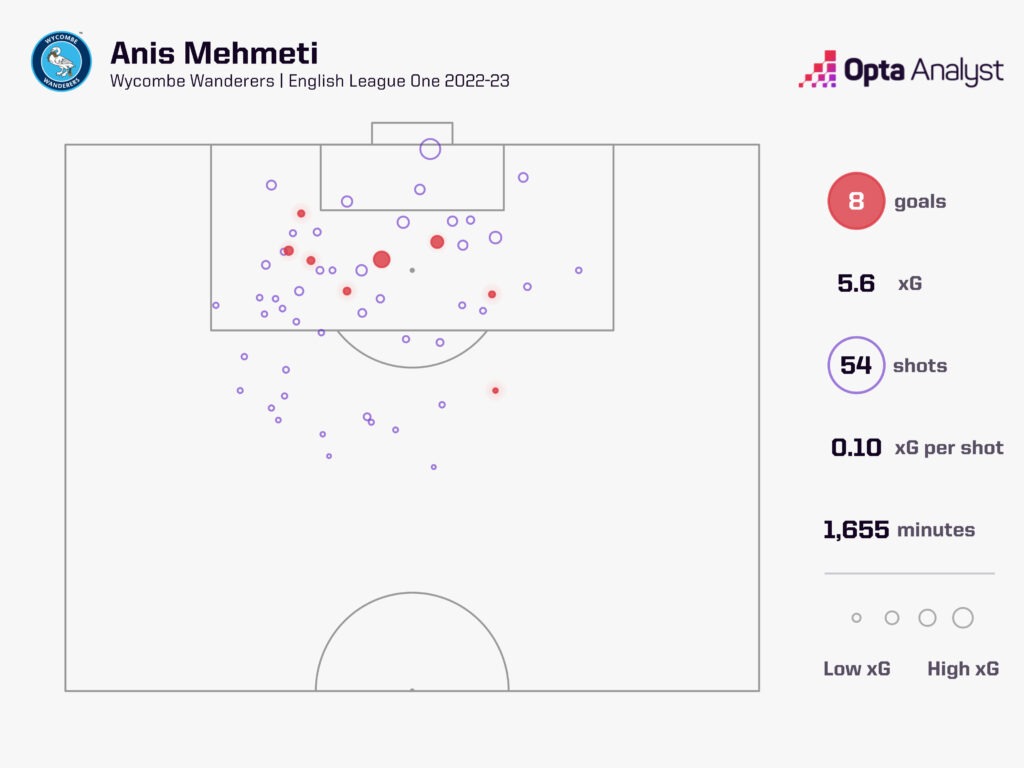
One of Wycombe’s biggest success stories has been that of Anis Mehmeti. The U21 Albanian international was plucked from Essex Senior League side Woodford Town and embedded in the Chairboys’ B Team before making his first team debut just a month later. Mehmeti – still only 21 years old – has already scored eight League One goals this season, eclipsing his efforts in the competition in 2021-22 (seven) before Christmas.
This approach is how clubs develop seven-figure talent and if they do that consistently, then have the business savvy to get the right fees for those players with high release clauses, it makes a huge difference to the long-term trajectory.
10. Be Process Driven
Simplified, this is the logic many clubs apply: “We want good results. We’re getting bad results. We must therefore change something to improve our results.”
A very reasonable line of thinking in theory, but in practice it can lead to erratic decisions, because previous results aren’t necessarily the biggest indicator of future ones.
With that in mind, good results with largely unconvincing performances, or bad results with largely encouraging performances, should be met with curiosity and a thirst for detail.
Only with that detail is it possible to understand how much of the results, good or bad, were down to managerial performance, and how much down to factors outside their control that may need addressing.
This approach should be taken when it comes to appointing a head coach, too. By doing the extra digging, it’s possible to find gems of a boss who have had some reputational damage due to working in a poor structure or avoid those who have great reputations for achievements on paper for which they were carried by individual quality.
The EFL is so wonderfully unpredictable, it’s perfectly possible to do each of the elements explained above and still fail, or none and still succeed.
However, anecdotal evidence suggests that there are some chief decision-makers across the leagues who are extremely devoted to their club, incredibly passionate, yet steered so heavily by what has worked for them previously that they find it difficult to evolve. Competitors, therefore, have an opportunity to gain ground by being smart, positive, and process driven.
There are no guarantees, but those who maximize their surroundings, pick a style that works for the identity of their club and use it to inform decisions whilst opening pathways and communication lines, as well as empowering people to do their jobs, are likely to be onto something good.
Enjoy this? Subscribe to our newsletter to receive exclusive content.
